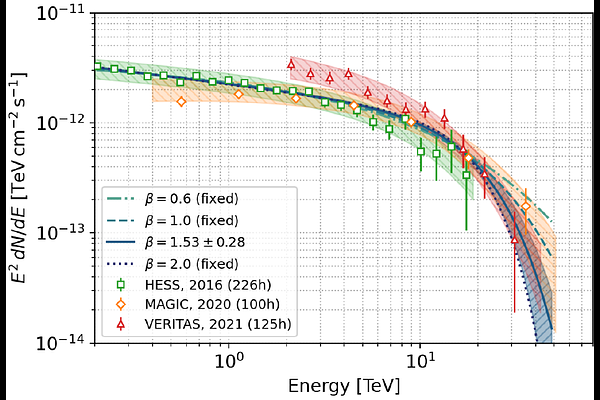Probing the sensitivity of CTAO-N LSTs observations at large zenith angles to the multi-TeV gamma-ray emission from the inner 10 parsecs of the Galactic Center

Probing the sensitivity of CTAO-N LSTs observations at large zenith angles to the multi-TeV gamma-ray emission from the inner 10 parsecs of the Galactic Center
Shotaro Abe, Tomohiro Inada, Emmanuel Moulin
AbstractObservations of the Galactic Center using Imaging Atmospheric Cherenkov Telescopes (IACTs), such as H.E.S.S., MAGIC, and VERITAS, have revealed a very-high-energy (VHE, $\gtrsim 100$ GeV) gamma-ray source, HESS J1745$-$290, aligned with the dynamical center of the Milky Way. This source shows point-like emission ($\lesssim 0.1^\circ$) and a strong suppression in its energy-differential spectrum in the ten TeV energy regime, modeled well by a power-law with an exponential cutoff. The origin of this emission is debated, with candidate emission scenarios including dark matter annihilations, millisecond pulsars in the central stellar clusters, and hadronic interactions in the vicinity of Sagittarius A*. Deriving the sensitivity to these spectral models is key to discriminating the physical processes at work. We show that combining H.E.S.S., MAGIC, and VERITAS archival data can well described the observed emission by a power-law with an exponential energy cutoff within the present uncertainties. Given the near advent of the array of the Large-Sized Telescopes (LSTs) at CTAO-N, we timely simulate realistic upcoming observations of the central emission by the CTAO-N four-LST array, to derive the sensitivity to resolve the sharpness of the spectral energy cutoff. We find that 500 hours of four-LST observations taken at large zenith angles, possibly accumulated over several years, can significantly discriminate the dark-matter emission scenario from the leptonic and hadronic ones. Also, a preliminary 3$\sigma$ hint for such discrimination could emerge within the first year. We demonstrate, for the first time, that CTAO-N is able to provide new insights on differentiating among the above-mentioned emission scenarios in the next several years.